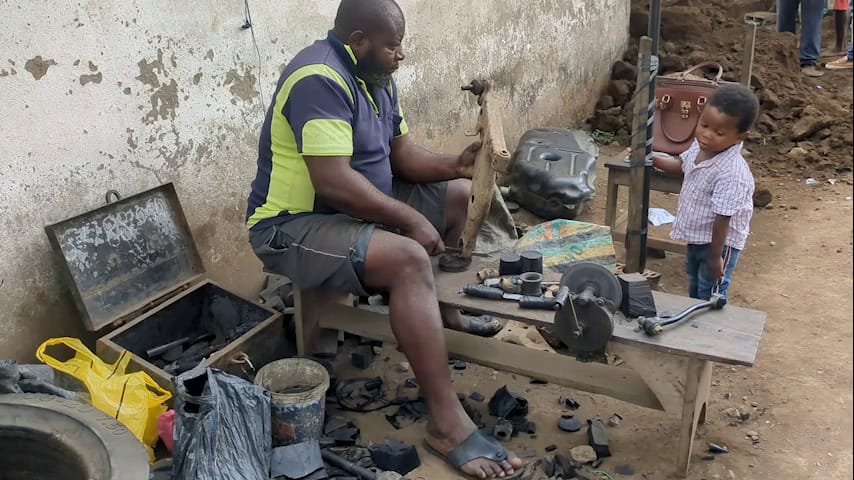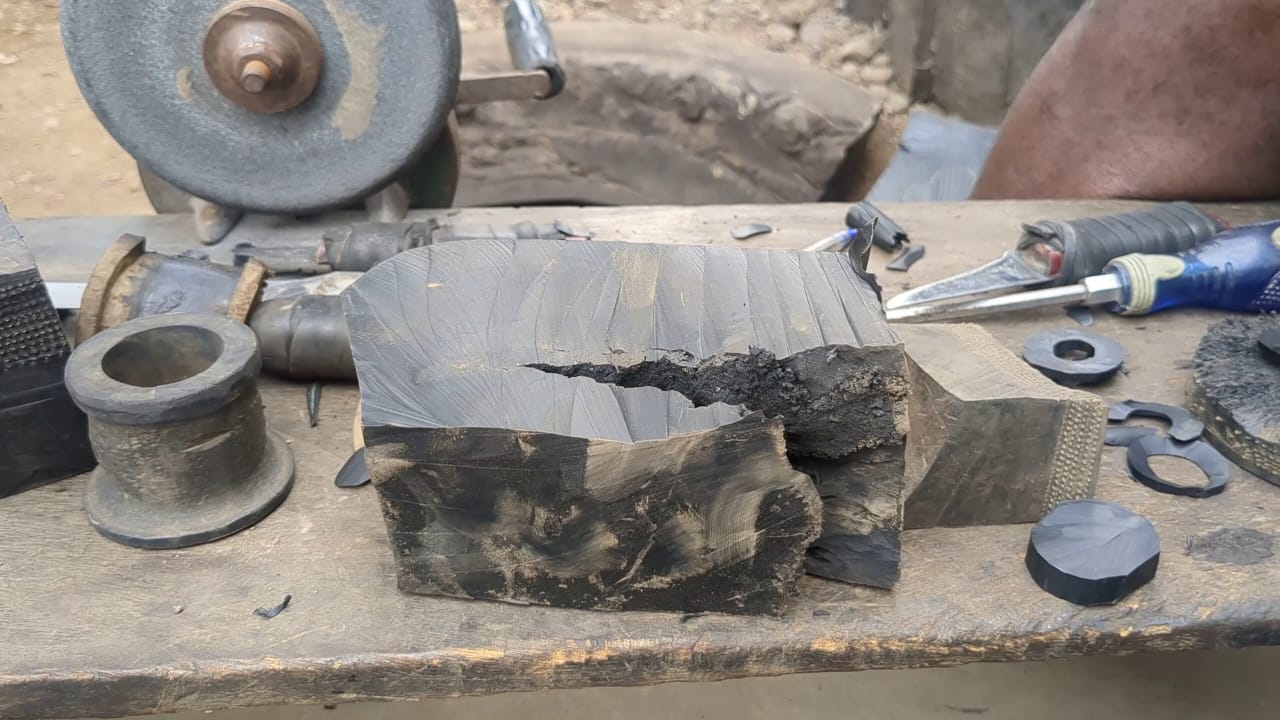Expert displaying slippers made from recycled car tyres
By Emmanuela Siy
In an age when environmental sustainability is more crucial than ever, innovative solutions are emerging from individuals around the world. For the past 30 years, Marcel, an inhabitant of Bunduma neighbourhood in Buea, the capital of Cameroon’s Southwest region, has been involved in recycling discarded tyres into reusable car parts, an act called ‘bushing-cutting’.
Bushing-cutting is not just addressing the problem of waste management but also contributes to a greener environment, creating economic opportunities for those involved in the activity. For Marcel, the initiative has been a game changer.
“When I started this art, I knew that a time will come when it will not be enough to feed my family so that’s why I am working hard to open a shop for my wife because now we have children and they can’t rely on the little I make here. But so far, this is what has been feeding my household,” Marcel said.
At his small shop in Bounduma, Marcel can be seen shaping these different bushings for spare parts. The material he uses could have been otherwise in drainage systems in the municipality or burnt, hence causing floods or polluting the atmosphere.

Expert carving out useful items from used car tyres
A trade Marcel started in Douala, has seen other young Cameroonians trained in bushing-cutting. To him, it is a pleasure to train young Cameroonians who are willing and have the patience to learn, and in turn, create opportunities for themselves and others. Marcel said: “We decided to use our own initiative to make parts like this, — that can be used for cars. Just like this part, in its original form, it is expensive but what we make, which is stronger, is cheap.
“The rubbers that come with the cars are strong but when they get bad what is bought is very weak compared to what we make. What we make from these old tyres is helping Cameroonians because we do it cheaply. Something that may cost over 3, 000 FCFA in a shop, we calve it out for 500 FCFA and it lasts longer.”
He further explains that he has trained four other young Cameroonians in Douala and today, they are on their own. He notes that in Buea where he is currently based, youths want easy means to get money because they are not patient enough. “They don’t want to work hard. Because to learn bushing-cutting to the point of standing on your own and opening your own shop, you can learn for over two years. Youths in this age will think this is a local work that does not give money and so they don’t want to learn,” Marcel said.

The process of carving out useful items from used car tyres
Apart from producing mechanisms used by cars and other automobiles and machine, the bushing-cutter also uses discarded car tyres to produce other items like slippers. To Donald, a businessman, he has been enjoying a product made from discarded rubber for over eight years. He said: “I have used these slippers for over eight years. Seven years ago, I bought them for 3000 FCFA. I like the slippers because it stays long and it is comfortable on my feet.”
Almondo, another local who also makes a living from bushing-cutting testified: “I have been doing this business for over 7 years now and I decided to go with it because it is a good job. All you need is patience and it is also very technical because many people are not into it,” Almondo said, adding, “I do slippers besides these car parts. I do this as a paying job. I don’t have any other job that I make money from. If there is another job, I can do it but the main job I do now is bushing-cutting.”
To Victory a learner of the art, he fell in love with the art the first time he saw it. “I decided to learn it because it looks easy to me. I am a student in an Evening School. My trainer can produce anything from tyres and I want to be like him,” Victory said.
The journey of discarded car tyres from waste to valuable materials illustrates the potential for innovation in addressing environmental challenges and it is a move closer to a sustainable future. Producing useful items from discarded rubber tyres goes a long way to reducing the number of used tyres that are dumped into gutters and other waterways. It also reduces the amount of tyres that wash up the sea shores and pollute marine life.
